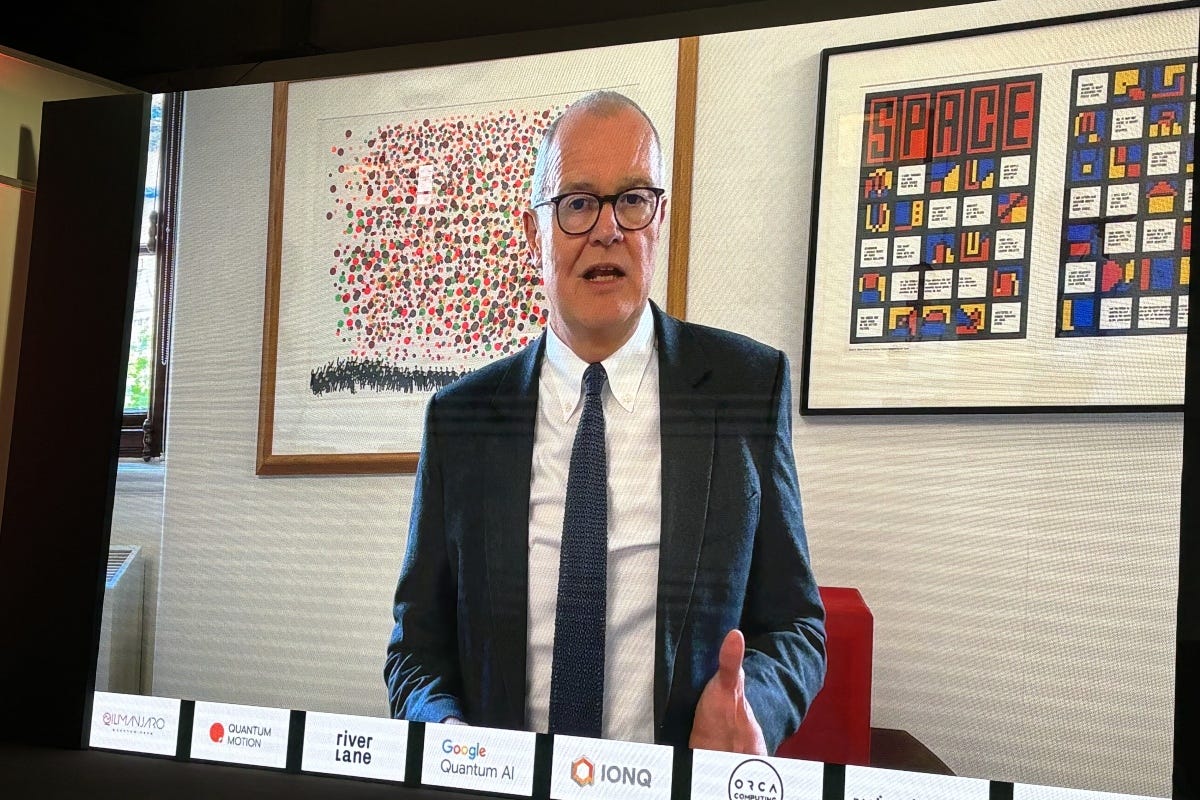UK Targets 2030 Quantum Breakthroughs in Sensing and Navigation Sectors
Government pushes for practical use of quantum sensors and PNT systems through funding, regulation, and cross-sector adoption

The United Kingdom government is now concentrating on converting its long-standing investment in quantum science into products with measurable economic and societal value.
Quantum sensors and position, navigation, and timing (PNT) technologies are leading the charge, and they are viewed as the most commercially viable areas in the near term.
“We need to make sure that we get the full potential of these quantum technologies,” said Lord Patrick Vallance, Minister of State for Science, Research and Innovation of the UK.
After a decade of foundational support, the UK is entering an acceleration phase.
“The UK quantum sector continues to be central to this government’s mission for growth,” Vallance said. “There’s no doubt it’s going to play an important part in our forthcoming industrial strategy.”
The UK is directing investment toward five national quantum missions to advance the technology. Among the most urgent are enabling NHS Trusts to deploy quantum sensing solutions by 2030 and rolling out an advanced national quantum network by 2035.
“Last month, we announced £121 million further investment into the sector over the next 12 months,” he said. “And today, I can announce another £14 million for a new Innovate UK (a national innovation agency) contract for an innovation competition to accelerate quantum sensing technologies.”
The aim is to fast-track healthcare, defence, transport, construction, and energy adoption.
“What’s impressive is that all these sectors are now realizing that they’ve got to link up to the opportunities presented by quantum sensing,” Vallance added.
Commercialisation at the Forefront
Vallance outlined the UK’s strategy during Commercializing Quantum Global 2025 in London on May 13. He spoke remotely, opening the event with a clear call to action: “I’m super excited that this is about commercialising quantum, because the science has reached a stage where that indeed is one of the great challenges.”
He continued, “The UK’s national quantum strategy isn’t just about funding research, it’s about creating a competitive advantage for the economy.”
Since 2014, the UK’s National Quantum Technologies Programme has built research and innovation capacity across quantum computing, sensing, imaging, and communications. With more than £1 billion invested in its first phase, the programme laid the groundwork for what Vallance described as “a very thriving, exciting academic centre linked to an increasingly thriving, exciting and high-potential commercial sector.”
Among the most important facilities is the National Quantum Computing Centre (NQCC), which Vallance said “is unique in the world in terms of the number of different technologies it brings together in a way that’s accessible to small companies, academia and industry.”
The new £22.5 million channelled through Innovate UK will support projects focused on quantum computing and networking.
“In other words, the things we already know are there and work—to get the proper uptake and use,” he said.
Building the Framework
The government is also building the regulatory and workforce infrastructure to support the sector’s growth. A new UK Quantum Regulators Forum held its inaugural meeting in April 2025, bringing together agencies to ensure the regulatory environment can keep pace with innovation.
“We’re taking steps to ensure that the UK has a pro-innovation environment,” Vallance said.
Skills development remains a core priority. Vallance acknowledged the work of the Quantum Skills Task Force, which recently produced a report on technical and engineering needs. Its recommendations are feeding into new fellowships, apprenticeships, and industry placements designed to expand the talent pipeline.
The UK has added Japan to its growing list of international quantum research allies, joining existing agreements with the US, Canada, Australia, the Netherlands, and Denmark.
“We’re strengthening our quantum research partnerships with allies overseas,” he said. The UK’s return to Horizon Europe’s quantum programme is another boost, providing access to EU-funded projects and collaborations.
“I’m really pleased that that’s the case,” Vallance added.
These efforts aim to cement the UK’s leadership in a growing worldwide sector.
“We build on a very strong legacy of support in the UK for a world-class sector,” he said.
Next Phase: Market Adoption
With technical capacity established and partnerships expanding, the UK’s priority is now delivery. The goal is to increase the UK’s current 9% share of the global quantum market to 15% by 2033, and to ensure 75% of businesses in key sectors are actively preparing for quantum adoption.
“Quantum is at a stage when commercialisation is the question,” Vallance said. “How do we do that? How do we do it effectively?”
Practical applications are already taking shape. One is financial crime prevention: HSBC and the NQCC are piloting projects using quantum computing’s unique ability to detect complex patterns in data to spot early indicators of money laundering. The same capabilities are being explored for applications in energy grid optimisation, medical diagnostics, and secure communications.
“These are technologies that exist,” Vallance stressed. “Now we need to accelerate uptake and proper use.”
To maintain momentum, the government has created a dedicated Office for Quantum within the Department for Science, Innovation, and Technology. It will coordinate policy, report to the National Science and Technology Council, and track progress on national goals.
Vallance closed with a direct message to the sector: “If you’re a quantum innovator, please keep doing what you’re doing, and ensure you get involved with the UK programmes to help you. If you’re an investor and not investing in this exciting technology, why not?”
As the UK moves into the commercialisation era, its success will hinge on execution: linking public R&D to market demand, integrating quantum systems into public and private sectors, and staying ahead in an increasingly competitive global race.
The next five years will reveal whether the UK’s early momentum can deliver results where it counts.


